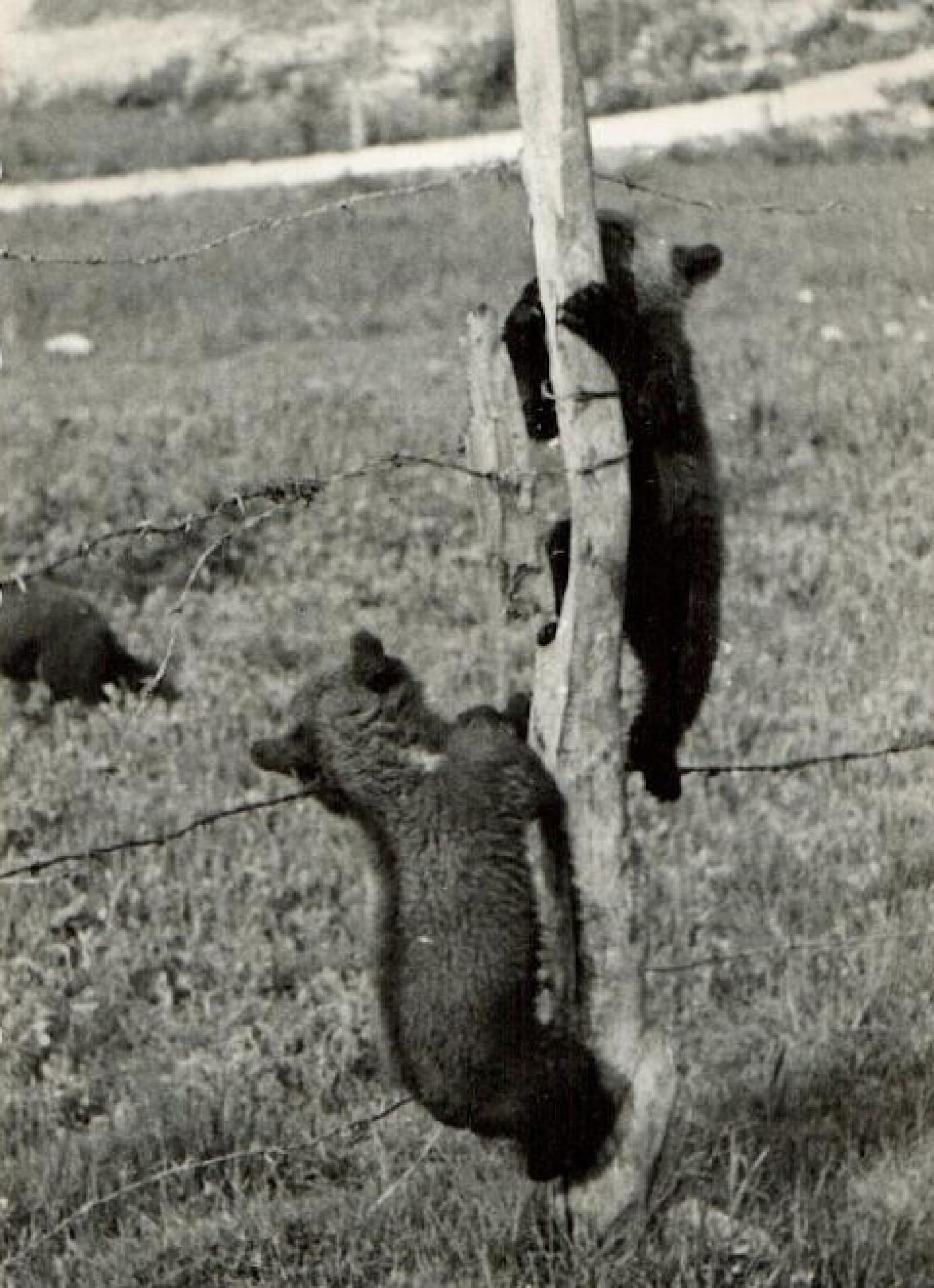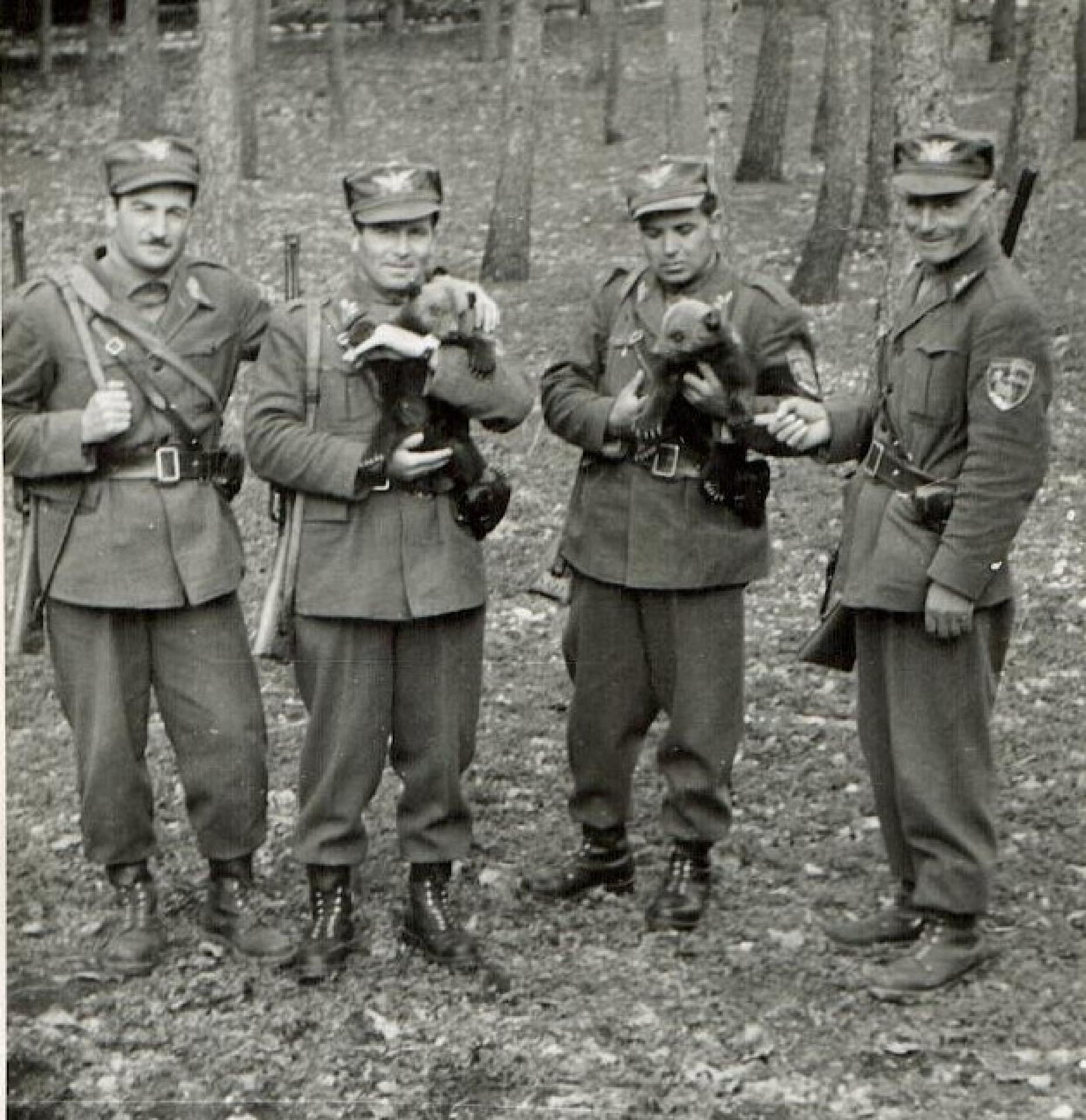Marsican brown bear: A species with an ancient and little-known history
Also known as the Apennine brown bear, the Marsican brown bear is a species endemic to the central Apennines, with a small population having a range in and near the mountains of the Abruzzo, Lazio, and Molise National Park, for which it represents the symbol and one of the principal naturalistic values. The population of the central Apennines was described under the name of Ursus arctos marsicanus, as a subspecies, in 1921 by Giuseppe Altobello, a naturalist from Molise who studied the fauna of Molise and Abruzzo. Subsequent scholars did not immediately recognize this classification, and it was not until 1954, when paleontologist Sergio Conti confirmed the validity of the subspecies, after studying a Marsican brown bear skull preserved at the Museo di Storia Naturale of Genoa, and after identifying certain other significant characteristics. But it still was necessary to wait until the years 1982-1984, when Professor Augusto Vigna Taglianti-through systematic research on the morphology of the Abruzzo bears based on observations of various remains of numerous specimens collected and preserved at the Abruzzo, Lazio, and Molise National Park-defined the Apennine bear population as a subspecies, reevaluating the name Ursus arctos, subspecies Marsicana, Altobello (1921). This interpretation was formalized and published in Volume 38 of Fauna d'Italia (2004) and has been confirmed by subsequent research and publications. The Apennine subspecies is distinguished from all other brown bear populations by various morphological and morphometric characteristics of the skull, particularly evident in adult specimens. While the skull in females and young is similar to that of other Eurasian populations, the head in males is shorter, broader, and higher, with a marked crest and a short muzzle. From the faunal and biogeographical points of view, the Marsican bear cannot simply be considered a "postglacial" relict derived from the Alpine populations that descended along the Apennines: its origins and affinities have yet to be clarified, but in any case, preliminary genetic and molecular data speak in favor of an oriental, Balkan origin. In conclusion, the Marsican bear has an ancient and little-known history. Presumably its ancestors populated the Apennines after arriving from the Balkans in remote times, without there ever having been connections with the Alpine populations.
The average weight of an adult male Marsican bear is around 140-210 kg (females are smaller), with a maximum length of 150-180 cm.
The bear is an omnivore and therefore feeds on both plants and animals, even if 80% of its diet does consist of vegetables. Its diet varies seasonally, depending on what Nature has to offer: fruits and berries, insects and larvae, honey, animal carcasses.
Mating season for bears begins in May. Both males and females can mate with multiple individuals in the same season, and consequently the young of a given litter can be sired by different fathers. The female gives birth to from 1 to 3 cubs in February, during the period of dormancy. At time of birth, the babies weigh less than 500 grams and are completely dependent on their mother. Thanks to the mother's milk, particularly rich in fats, the bear cubs grow rapidly, to the point of being able to face weaning in the summer; they then remain with their mother for more than a year. With the first arrival of cold weather, when food supplies begin to dwindle, the bears go in search of a dry and safe refuge where they can spend the winter. In the den the bear goes into dormancy which is different from hibernation. Winter dormancy (torpor) is a period when the bear slows down its vital activities, surviving thanks to the fat accumulated in autumn, which functions both as energy reserve and thermal insulator. This is not a true hibernation, unlike that in other species. Bears, in fact, maintain a good degree of reactivity to external stimuli, and can even come out of the den during mild or sunny winter days.
Confident bearsi
The phenomenon of overly trusting bears concerns the whole world round, including also the Abruzzo, Lazio, and Molise National Park. Already in 1877, we find traces of attempts to keep the bear away from what we today call "easy food," that is, food of anthropic origin. In a document sent by Pescasseroli to the Direzione Regie Cacce di Napoli Royal Hunting Directorate of Naples, authorization was requested to destroy a bear, owing to its continual predation upon livestock. In fact, at that time no indemnity was provided for damage caused by a bear, a fundamental step in the process of coexistence with the large mammal, which materialized only in 1969. This was the starting year for provision of compensation for bear damage, thanks to the WWF, with the park taking over this responsibility beginning from 1971 and continuing up to present day, with specific regulations. Park archives have made it possible for us to discover that what we now call "confident bears" have actually always been there. More difficult to understand are the conditions, dynamics, management responses, and contexts, because in the past, confident bears were not adequately described or monitored, as they are today. Furthermore, if on the one hand, it was clear that bears needed to be protected, on the other, they were animals that created problems for the only economic resource of the time: sheep farming. But what is a so-called confident bear? By confident, we mean bears that venture into villages, cause damage, or are the protagonists of human-bear interactions, with such frequency as to create economic and/or social problems, to the point of requiring immediate management response. The management of the phenomenon is therefore part of a population conservation strategy, in which the genetic and reproductive contribution of each individual has a fundamental, irreplaceable, and indispensable role. The first confident bear adequately described and monitored in the modern era is the case of Bear FP07, known by the name of Yoga.
The case of Yoga Beari
Starting in 1994, while still young, Yoga began to frequent the Camosciara area, in the municipalities of Civitella Alfedena and Opi, where she went looking for food in bins and within campsites. The first measures implemented by the park were the removal of what could be called "easy food." In the area frequented by the bear, the first steps included the constant and systematic cleaning of remains from picnics abandoned by tourists along the roads and rivers, removal of waste bins, and the setting up of artificial feeding sites (supplemental feeding). This last operation, however, proved to be totally ineffective, because the result was that the bear ate first from the artificial sites, before then continuing into the villages. The next attempted solution was a translocation, that is, the physical removal of the bear, in a transfer to Cicerana, in the municipality of Lecce nei Marsi, at a linear distance of nearly 20 km from her original range. After just 5 days Yoga returned to Camosciara. In 1997, following new incursions, the park decided to remove the bear and place it in captivity, in an enclosure in Villavallelonga, more than 60 km away, but after a week it managed to escape and return to Camosciara. In 1998, a preliminary reaction protocol was decided upon, establishing a set of dissuasive activities that included rubber bullets. Initially the results were quite encouraging, as the bear acquired a more elusive behavior. In 1999, however, it entered the cellar of a home in the town of Opi, and after careful evaluation the park decided to remove it definitively, returning it to the Villavallelonga wildlife area.
In 2019 she died of old age.
For further information, you can consult the Rapporto Orso (Marsicano bear report) , which is updated regularly.
https://www.parcoabruzzo.it/pdf/NatProtetta24.pdf




BIBLIOGRAPHIC NOTE
L. Boitani, S. Lovati, A.V. Tagliati, Fauna d'Italia. Mammalia III: Carnivora, Milano, Calderini, 2004
A.V. Taglianti, Chi è l'orso marsicano?, a cura di Daniela D'Amico, Luigi Boitani e altri, in «I quaderni del Parco, n. 1», Pescasseroli, Parco Nazionale d'Abruzzo, Lazio e Molise, 2008
ARCHIVAL REFERENCES
Archivio storico del Parco Nazionale d'Abruzzo, Lazio e Molise
BY
Laura Vittoria Montenero (traduzione John Venerella)

 help with your research
help with your research
